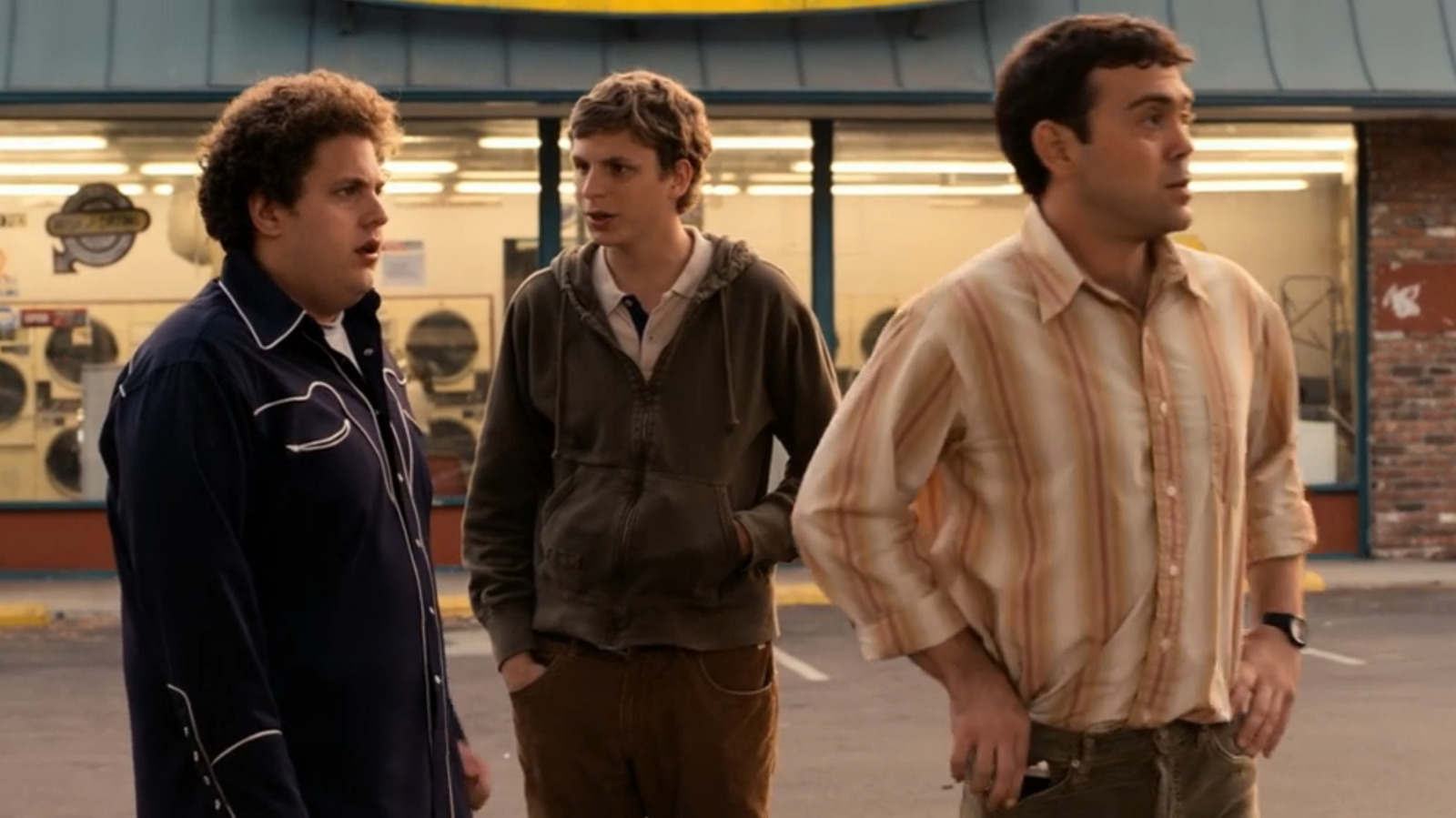Superbad Parents Guide, A Parental Review
Superbad Parents Guide: Navigating the raunchy humor and mature themes of this popular teen comedy requires careful consideration. This guide helps parents understand the film’s content, including its depictions of teenage rebellion, substance use, and sexual situations, allowing for informed decisions about viewing.
We’ll examine various rating systems, pinpoint specific scenes needing parental guidance, and discuss the film’s cultural impact and lasting legacy. We’ll also offer strategies for pre- and post-viewing discussions, helping families engage meaningfully with the film’s complex themes of friendship, anxiety, and the transition to adulthood.
Superbad: A Parental Guide: Superbad Parents Guide
Superbad, a 2007 teen comedy directed by Greg Mottola, follows the misadventures of three high school seniors as they navigate their final days of school, friendships, and burgeoning adulthood. While lauded for its sharp humor and relatable portrayal of teenage anxieties, the film contains mature themes and content that require parental consideration before viewing.
Movie Overview and Parental Concerns

Superbad centers around Seth, Evan, and Fogell, three friends desperate to secure alcohol for a party and impress girls. The film’s humor relies heavily on crude jokes, sexual situations, and depictions of underage drinking. These elements are likely to be inappropriate for younger viewers, particularly those below the typical age restrictions imposed by rating systems.
The movie explores themes of teenage rebellion, showcasing the characters’ attempts to break free from parental constraints and societal expectations. Substance use, specifically alcohol, is a central plot point, depicting its acquisition, consumption, and consequences, albeit with comedic exaggeration. Several scenes depict sexual situations, including suggestive dialogue and implied sexual activity, which may be uncomfortable or confusing for younger audiences.
Rating Systems and Their Implications
Various rating systems, such as the MPAA (Motion Picture Association of America) and Common Sense Media, offer guidance to parents on the suitability of films for different age groups. Superbad received an R rating from the MPAA, indicating that it contains content inappropriate for children under 17. Common Sense Media offers a more detailed breakdown of the film’s content, highlighting specific concerns like strong language, sexual content, and substance use.
These ratings serve as a starting point for parental discussions but should not be considered the sole determinant of appropriateness.
The effectiveness of these ratings is debatable. While they provide a general guideline, they don’t always capture the nuances of a film’s impact on individual viewers. Parental judgment and pre-viewing discussions remain crucial in determining a film’s suitability for a specific child.
Specific Scenes Requiring Parental Guidance
Three scenes in particular warrant close parental attention. First, the scene where the characters attempt to purchase alcohol from a liquor store showcases the lengths teenagers might go to obtain prohibited substances. Second, several scenes involving the characters’ interactions with girls contain suggestive dialogue and situations that may be confusing or inappropriate for younger viewers. Third, the party scene itself is rife with underage drinking and boisterous behavior, potentially normalizing risky actions for impressionable viewers.
These scenes could lead to uncomfortable conversations, especially if viewed without parental guidance and discussion.
Ever wondered about DC Young Fly’s family background? You can find out more about his parents by checking out this link: dc young fly parents. It’s interesting to see how different family dynamics influence a person’s life. Speaking of influence, a strong family structure is a key component of a successful life, and initiatives like the quality parenting initiative are working to support parents in building those strong foundations.
Ultimately, strong family units contribute to a healthier and more thriving society.
The impact of these scenes varies greatly depending on a child’s age and maturity level. Younger children may misinterpret the humor or normalize the risky behaviors depicted. Older teens might find the scenarios relatable but may still benefit from a discussion about responsible choices and consequences.
Parents should approach these scenes by initiating open conversations before, during, and after watching the film. Explaining the context, the intended humor, and the potential risks of the behaviors shown is crucial for responsible viewing.
Thematic Discussion and Context
Superbad’s humor is largely situational and relies heavily on crude jokes and awkward encounters. This style, while effective in its comedic delivery, might not be appropriate for all audiences. The potential effects range from amusement to discomfort, depending on individual sensitivities. The film’s portrayal of friendship is complex, showcasing both the intense loyalty and the inevitable conflicts within close relationships.
It realistically portrays the ups and downs of male friendships, including moments of vulnerability and support.
The film realistically explores the anxieties and uncertainties of the transition to adulthood. The characters grapple with identity, relationships, and the fear of the unknown, providing a relatable narrative for teenagers experiencing similar challenges. The comedic elements serve to lighten the intensity of these themes, creating a balance between humor and realism.
Alternative Viewing Options and Strategies
Pre-viewing discussions are essential for parents to gauge their child’s maturity level and understanding of the film’s themes. These conversations should focus on the film’s rating, potential problematic content, and the importance of critical viewing. Parents should actively engage their children in discussions about the characters’ choices and the consequences of their actions.
Alternative viewing options for families include age-appropriate comedies with similar themes of friendship and coming-of-age, but without the explicit content of Superbad. Engaging in alternative activities, such as family game nights or outdoor adventures, could also provide a valuable bonding experience.
Post-viewing discussions should focus on the film’s themes, the characters’ motivations, and the consequences of their choices. Open communication allows parents to address any concerns and guide their children toward a more critical understanding of the film’s message.
- Discuss the characters’ motivations and decisions.
- Analyze the humor and its effectiveness.
- Explore the themes of friendship, identity, and adulthood.
- Discuss the portrayal of risky behaviors and their consequences.
Cultural Impact and Reception
Upon its release, Superbad garnered significant attention for its realistic portrayal of teenage life and its irreverent humor. It resonated with audiences and critics alike, achieving both commercial and critical success. The film’s cultural impact lies in its lasting influence on teen comedies and its ability to capture the anxieties and experiences of a generation.
Critical reception was largely positive, praising the film’s writing, performances, and comedic timing. Many critics lauded its honest portrayal of teenage life, while some criticized its explicit content. The film’s long-term legacy includes its status as a cult classic and its influence on subsequent teen comedies.
Ever wonder about the family life of DC Young Fly? You can find some info on his parents at this link about DC Young Fly’s parents , which is pretty interesting. It makes you think about the different approaches to parenting, and how a strong family foundation can influence someone’s career. Speaking of strong foundations, check out the quality parenting initiative – it’s all about building supportive environments for kids.
It’s a really valuable resource for anyone interested in learning more about effective parenting strategies.
A timeline of significant events and reviews would include the film’s release date (August 17, 2007), positive critical reviews from publications like Rolling Stone and Entertainment Weekly, its box office success, and its subsequent recognition as a cult classic.
Comparison with Similar Films, Superbad parents guide

Superbad can be compared to other teen comedies such as “American Pie” and “Knocked Up,” which also explore themes of teenage sexuality, friendship, and the transition to adulthood. However, Superbad distinguishes itself through its more realistic and less overtly sexual portrayal of teenage life. While “American Pie” often relies on slapstick and exaggerated scenarios, “Superbad” maintains a more grounded approach, albeit with its share of crude humor.
Key differences lie in tone and approach. While “American Pie” is more focused on sexual exploits, Superbad emphasizes the complexities of friendship and the anxieties of growing up. This shift reflects an evolution in teen comedy, moving from purely physical humor to a more nuanced exploration of teenage emotions and experiences.
The evolution of teen comedies demonstrates a gradual shift from purely physical humor to a more complex and emotionally resonant style. Films like “Superbad” represent a move toward more realistic portrayals of teenage life, including its anxieties and uncertainties, while still maintaining comedic elements.
Addressing Concerns About Language and Behavior
Superbad employs strong language throughout, including profanity and crude jokes. This language could be offensive or disturbing to younger viewers, potentially desensitizing them to inappropriate language. The film also portrays risky behaviors, such as underage drinking and reckless driving, without explicitly showing severe consequences. This could lead to misinterpretations about the seriousness of these actions.
Parents should address these concerns by explaining the context of the language and behaviors within the film. It’s crucial to emphasize that the film’s depiction does not endorse or condone these actions. Open conversations about responsible decision-making and the potential consequences of risky behaviors are essential. Parents should highlight the differences between fictional portrayals and real-life situations, emphasizing the importance of making safe and responsible choices.
Ultimately, deciding whether or not to watch “Superbad” is a personal choice. This guide provides the tools for parents to make informed decisions, fostering open communication with their children about the film’s content and its broader implications. By understanding the film’s strengths and weaknesses, parents can use “Superbad” as a springboard for meaningful conversations about growing up, navigating peer pressure, and the responsibilities of adulthood.
Share this content:
